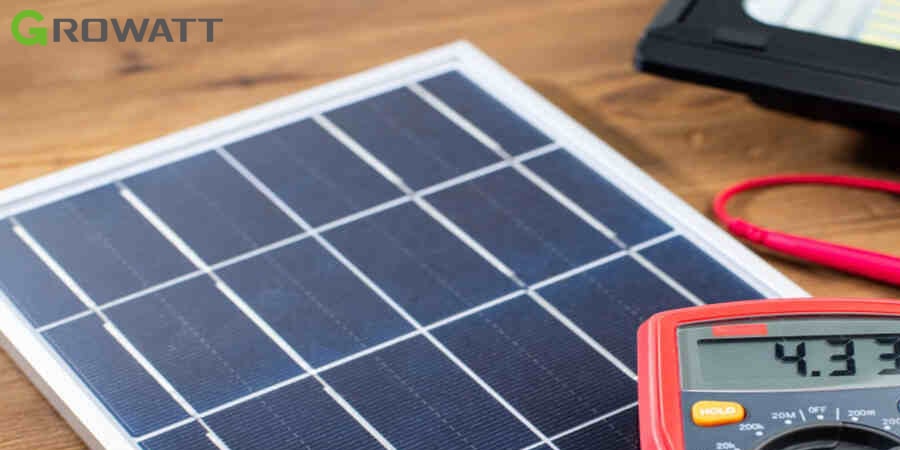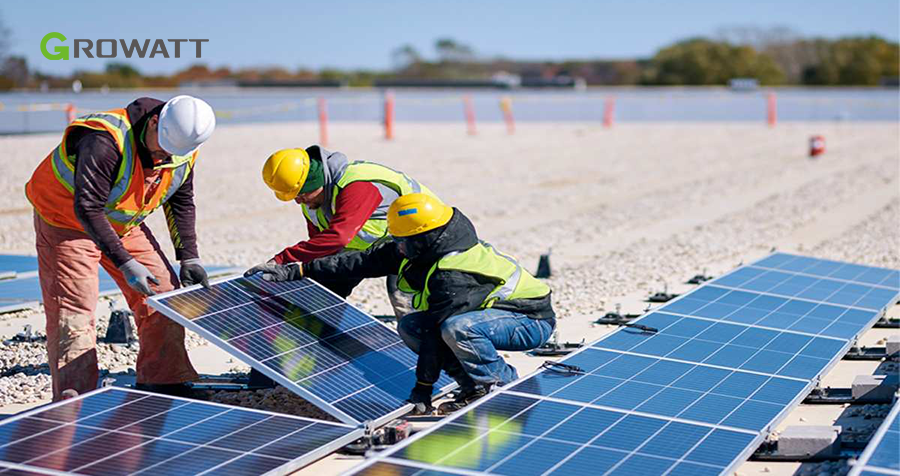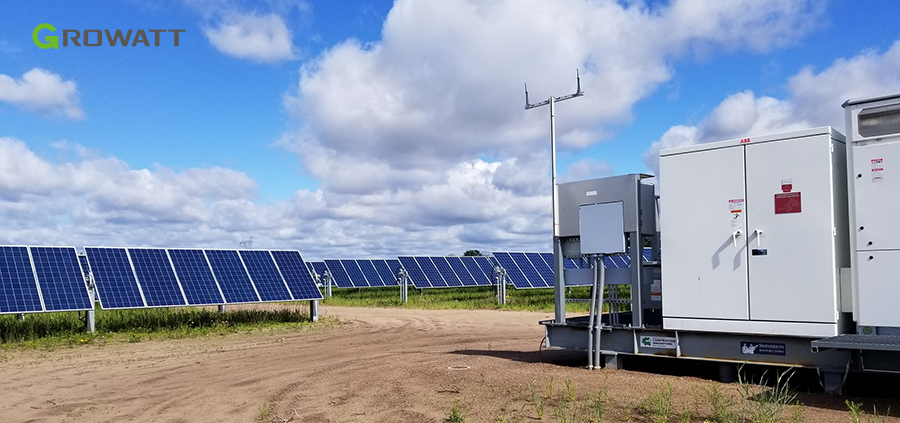Solar power has emerged as an eco-friendly and cost-effective solution to meet our energy needs. Solar panels, designed to harness the sun’s energy and convert it into electricity, have become increasingly popular in homes and businesses worldwide. A crucial component of any solar power system is the solar inverter, which is responsible for converting the direct current (DC) generated by the panels into alternating current (AC) used to power your appliances and feed surplus energy back into the grid.
While solar energy offers numerous benefits, solar inverters can encounter issues that may disrupt energy production. Understanding and troubleshooting these problems is essential to maintaining a smoothly running solar power system. In this comprehensive guide, we will explore common solar inverter problems, their causes, and effective solutions, ensuring your solar energy system remains reliable and efficient.
Common Solar Inverter Problems
1. No Power Output
Issue: One of the most concerning problems is when your solar inverter shows no power output, leaving your solar panels inactive.
Possible Causes:
Grid Disconnection: If your solar inverter is disconnected from the grid, it won’t produce power, as it’s designed to shut down when the grid is down for safety reasons.
Inverter Failure: Inverter components may fail over time due to wear and tear or manufacturing defects.
Faulty Wiring: Damaged or loose wiring can disrupt the flow of electricity from the solar panels to the inverter.
Solution:
- Ensure the solar inverter is connected to the grid.
- Check the inverter’s display for error messages.
- Inspect the wiring connections for any damage or loose connections.
- If the inverter displays an error, consult the user manual or manufacturer’s website for troubleshooting guidance.
- If the issue persists, contact a professional for further diagnostics and repairs.
2. Low Power Output
Issue: Your solar inverter is working, but it’s not generating as much power as it should, resulting in reduced energy production.
Possible Causes:
Shading: Obstructions like trees, buildings, or debris can cast shadows on your solar panels, reducing their efficiency.
Dirt and Dust: Accumulated dirt and dust on the solar panels can decrease their ability to capture sunlight.
Inverter Efficiency: Over time, inverters can become less efficient, causing a drop in power output.
Panel Aging: Solar panels may degrade with age, leading to reduced power generation.
Solution:
- Conduct a shading analysis to identify and remove obstructions blocking sunlight.
- Regularly clean your solar panels with a gentle hose spray, or consult your manufacturer’s cleaning guidelines.
- Monitor the inverter’s efficiency through its display or online monitoring system.
- Schedule regular maintenance to check and replace any worn-out or underperforming components.
3. Inverter Error Codes
Issue: Your solar inverter displays error codes, indicating a malfunction in the system.
Possible Causes:
Software Updates: In some cases, error codes may be resolved by updating the inverter’s software.
Internal Faults: Internal components or circuits may malfunction due to various factors.
Electrical Issues: Voltage spikes, surges, or fluctuations can trigger error codes.
Solution:
- Refer to your inverter’s manual to interpret the error codes.
- If the issue is related to a software error, follow the manufacturer’s instructions for updating the software.
- For internal faults, consult a professional technician or the manufacturer for repair or replacement options.
- Invest in surge protection devices to safeguard your solar system from electrical issues.
4. Overheating
Issue: Your solar inverter becomes excessively hot, which can be a safety concern and lead to performance issues.
Possible Causes:
Inadequate Ventilation: Inverters need proper ventilation to dissipate heat effectively.
High Ambient Temperatures: Extremely hot weather can cause the inverter to overheat.
Dust and Debris: Dust and debris accumulation can obstruct cooling mechanisms.
Solution:
- Ensure that the inverter is installed in a well-ventilated area.
- If possible, provide additional ventilation or install a cooling fan.
- Clean any dust or debris from the inverter’s vents regularly.
- Consider installing shade or a cover to protect the inverter from direct sunlight.
5. Ground Faults
Issue: Ground faults can lead to electrical safety issues and may cause your inverter to shut down.
Possible Causes:
Wiring Problems: Damaged or improperly connected wires can create ground faults.
Moisture and Corrosion: Moisture and corrosion can contribute to electrical ground faults.
Solution:
- Inspect all wiring connections for damage or loose wires.
- Address any moisture issues by ensuring that wiring and connections are kept dry.
- Regularly check for signs of corrosion and replace any corroded components.
- If the issue persists, consult a professional electrician for a thorough inspection.
Troubleshooting Solar Inverter Issues
Now that you are aware of common solar inverter problems and their possible causes, let’s delve into troubleshooting these issues to get your solar energy system back on track.
1. Check for Loose Connections
Loose or damaged connections are often the culprits behind inverter problems. Inspect all wiring connections to ensure they are secure and free from damage. Tighten any loose connections carefully, but avoid over-tightening, which can lead to further damage.
2. Verify Solar Panel Operation
Before assuming the inverter is at fault, verify that your solar panels are operating correctly. Conduct a visual inspection to ensure there are no obstructions casting shadows on the panels. Additionally, monitor the panels for any signs of damage, such as cracks or wear.
3. Monitor Inverter Error Codes
If your inverter displays error codes, consult the user manual or the manufacturer’s website to identify the issue. Follow the recommended troubleshooting steps to address the specific error code displayed. In some cases, a simple reset or software update can resolve the problem.
4. Manage Overheating
To prevent overheating, ensure your inverter is installed in a well-ventilated area. If necessary, consider installing additional cooling mechanisms, such as fans. Regularly clean the inverter’s vents and surroundings to prevent dust and debris buildup.
5. Address Ground Faults
Inspect all wiring and connections for signs of damage or corrosion. Address any moisture issues and replace corroded components. If you continue to experience ground faults, seek assistance from a professional electrician to conduct a thorough inspection and repairs.
Preventive Maintenance
Preventive maintenance is key to keeping your solar inverter and the entire solar energy system in top condition. Here are some maintenance tips to ensure the longevity and efficiency of your solar power setup:
Regular Cleaning: Clean your solar panels at least once or twice a year to remove dust and debris. Use a gentle hose spray or follow the manufacturer’s cleaning guidelines.
Visual Inspections: Routinely inspect your solar panels for signs of damage and obstructions that might cast shadows. Promptly address any issues you discover.
Monitoring Software: If your inverter is equipped with monitoring software, regularly check it to ensure your system is operating at its peak efficiency. Monitor for any error codes or performance fluctuations.
Annual Professional Checkup: Consider scheduling an annual checkup with a professional technician to ensure all components of your solar energy system are working optimally.
Protect from Extreme Conditions: Protect your inverter from extreme conditions such as direct sunlight and excessive heat. If necessary, install shade or covers to shield it from harsh weather.
When to Seek Professional Help
While many solar inverter issues can be addressed through troubleshooting, some problems require professional expertise. Here are instances when it’s best to consult a professional technician:
Internal Component Failure: If internal components within the inverter have malfunctioned, it’s best to rely on a professional to diagnose and repair the issue.
Warranty Concerns: If your inverter is still under warranty, attempting to repair it yourself may void the warranty. Consult the manufacturer or an authorized service provider for warranty-related repairs.
Electrical Hazards: If you suspect electrical issues or ground faults that you’re not equipped to handle safely, consult a licensed electrician to avoid potential safety hazards.
Complex Errors: In some cases, the error codes displayed on your inverter may indicate complex issues that require in-depth diagnostics and repairs beyond the scope of basic troubleshooting.
Conclusion
A well-maintained solar inverter is vital for the efficient operation of your solar energy system. By understanding common solar inverter problems and their solutions, you can troubleshoot many issues on your own, ensuring consistent energy production.
Remember to prioritize safety and consult professionals when needed, especially for complex issues or electrical hazards. Regular preventive maintenance will extend the life of your solar power system, allowing you to enjoy clean, renewable energy for years to come.
Incorporate these tips into your solar energy maintenance routine, and you’ll be well on your way to a sustainable and trouble-free solar power experience.






The battery charging light is full in the irregulator. But it can not produce power through the invertor. When I switch on the invertor, the red light came on with the green light together. What is the cause of this problem? Could you give me some hints?